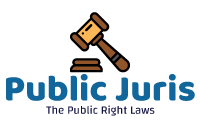
Sexual Harassment Lawsuit: Seeking Justice and Raising Awareness
Sexual harassment is a pervasive issue that affects countless individuals in various settings, from workplaces to educational institutions and beyond. It is a violation of human rights that can have devastating consequences for the victims. In recent years, there has been a significant increase in the number of sexual harassment lawsuits filed, as more people find the courage to stand up against their perpetrators and demand justice. In this article, we will delve into the intricacies of a sexual harassment lawsuit, exploring its legal aspects, its impact on victims, and the importance of raising awareness to prevent such incidents from occurring.
Understanding Sexual Harassment
Defining Sexual Harassment
Sexual harassment refers to unwelcome sexual advances, requests for sexual favors, or other verbal or physical conduct of a sexual nature that interferes with an individual’s work or educational environment. It is important to note that sexual harassment can occur between individuals of any gender and may involve power imbalances.
Types of Sexual Harassment
There are two primary types of sexual harassment: quid pro quo and hostile work environment. Quid pro quo harassment occurs when employment decisions or opportunities are explicitly tied to the acceptance or rejection of unwelcome sexual advances. On the other hand, hostile work environment harassment refers to an intimidating, offensive, or hostile atmosphere created by persistent and severe sexual conduct or comments.
Examples of Sexual Harassment
Sexual harassment can manifest in various forms, such as:
- Unwanted physical contact or advances
- Sexually explicit comments, jokes, or gestures
- Displaying sexually suggestive images or materials
- Repeatedly making sexual innuendos or propositions
- Creating a hostile or intimidating work environment based on gender
The Legal Landscape
Laws and Regulations
Numerous laws and regulations exist to address and combat sexual harassment. These include federal laws like Title VII of the Civil Rights Act of 1964 in the United States, which prohibits sexual harassment in the workplace, and similar legislation in other countries. Both employers and employees must understand their rights and obligations under these laws.
Workplace Sexual Harassment Policies
To prevent and address sexual harassment, many organizations establish clear policies outlining what constitutes sexual harassment and the procedures for reporting and addressing such incidents. These policies create a framework for handling complaints, conducting investigations, and imposing appropriate disciplinary actions.
Filing a Lawsuit
When an individual decides to file a sexual harassment lawsuit, several steps are involved. First, they should consult an attorney specializing in employment law to assess the viability of their case. The attorney will guide them through the legal process, which typically includes filing a complaint, engaging in pre-trial procedures, and potentially going to court if a settlement is not reached.
The Impacts of Sexual Harassment
Emotional and Psychological Consequences
Sexual harassment can have severe emotional and psychological impacts on victims. It can lead to feelings of shame, guilt, anxiety, depression, and post-traumatic stress disorder (PTSD). The emotional toll can significantly affect a person’s well-being and quality of life.
Professional and Career Effects
Victims of sexual harassment often face negative consequences in their professional lives. They may experience a decline in work performance, miss opportunities for career advancement, or even face wrongful termination. The impact on their professional reputation can be long-lasting and challenging to overcome.
Social and Personal Fallout
Sexual harassment can strain personal relationships and contribute to social isolation. Victims may feel a loss of trust in others, struggle with intimacy and personal boundaries, and experience difficulties in maintaining healthy relationships. The effects can extend beyond the workplace, permeating various aspects of their lives.
The Process of a Sexual Harassment Lawsuit
Reporting and Documentation
When someone experiences sexual harassment, it is essential to report the incident promptly. Victims should document all relevant details, including dates, times, locations, and any witnesses present. This documentation serves as crucial evidence in the legal proceedings that may follow.
Investigation and Evidence Collection
After filing a complaint, organizations are responsible for conducting a thorough investigation into the allegations. This typically involves interviewing the parties involved, collecting evidence, and assessing the credibility of the claims. Evidence may include emails, text messages, witnesses’ testimonies, or video recordings.
Legal Proceedings and Courtroom Trials
If the investigation does not resolve the matter satisfactorily, the victim may choose to pursue legal action. Legal proceedings can involve mediation, arbitration, or a courtroom trial, depending on the circumstances and the parties involved. During these proceedings, both sides present their evidence and arguments before a judge or jury.
Empowering Victims and Encouraging Reporting
Support Systems and Resources
Support systems play a vital role in assisting victims of sexual harassment. These may include counselors, support groups, and hotlines dedicated to providing guidance, emotional support, and resources for legal assistance. Encouraging victims to seek help and access these resources is crucial for their well-being.
Encouraging Reporting and Overcoming Barriers
Many victims hesitate to report sexual harassment due to fear of retaliation, disbelief, or a lack of confidence in the justice system. To overcome these barriers, it is essential to create a safe reporting environment, protect whistleblowers, and educate individuals on their rights and the available support mechanisms.
Shifting Societal Attitudes and Stereotypes
Addressing sexual harassment requires a collective effort to challenge societal attitudes and stereotypes that perpetuate such behavior. By promoting gender equality, consent education, and respectful conduct, we can foster a culture of respect and inclusivity, making sexual harassment less prevalent.
Raising Awareness and Prevention
Educational Initiatives
Educational institutions and workplaces should implement comprehensive programs that educate students and employees about sexual harassment, consent, and respectful behavior. These initiatives should also emphasize bystander intervention, empowering individuals to speak up and intervene when witnessing inappropriate conduct.
Workplace Training Programs
Organizations should provide regular training sessions on sexual harassment prevention, emphasizing zero-tolerance policies and the importance of fostering a safe and inclusive work environment. These programs should educate employees about recognizing, reporting, and addressing instances of sexual harassment appropriately.
Changing Organizational Culture
Creating an organizational culture that values respect, equality, and transparency is vital for preventing sexual harassment. Employers must enforce policies consistently, hold perpetrators accountable, and ensure that victims are protected from retaliation. By fostering a culture of respect, organizations can significantly reduce instances of sexual harassment.
Conclusion
Sexual harassment lawsuits serve as a means for victims to seek justice, raise awareness about the issue, and enact systemic change. Society must support victims, encourage reporting, and work towards preventing sexual harassment in all its forms. By addressing this pervasive problem head-on, we can strive toward a world where everyone feels safe, respected, and free from the threat of sexual harassment.
FAQs (Frequently Asked Questions)
1. How long do I have to file a sexual harassment lawsuit?
The timeframe for filing a sexual harassment lawsuit varies depending on the jurisdiction and applicable laws. It is best to consult with a lawyer to determine the statute of limitations in your specific case.
2. Can I file a sexual harassment lawsuit if the incident occurred outside of the workplace?
Yes, sexual harassment can occur in various settings beyond the workplace, such as educational institutions or public spaces. Consulting with a lawyer will help you understand your legal options based on the specific circumstances.
3. What should I do if I am experiencing sexual harassment but fear retaliation?
It is crucial to seek support and consult with a lawyer who can guide you through the process. They can help protect your rights and provide advice on how to navigate potential retaliation.
4. Are sexual harassment lawsuits always settled in court?
No, sexual harassment lawsuits can be resolved through various means, including settlements, mediation, or arbitration. The resolution method depends on the preferences and circumstances of the parties involved.
5. How can I support someone who has experienced sexual harassment?
Listen without judgment, believe their account, and offer empathy and support. Encourage them to seek professional help and provide information about available resources. Respect their decisions regarding reporting or pursuing legal action.



